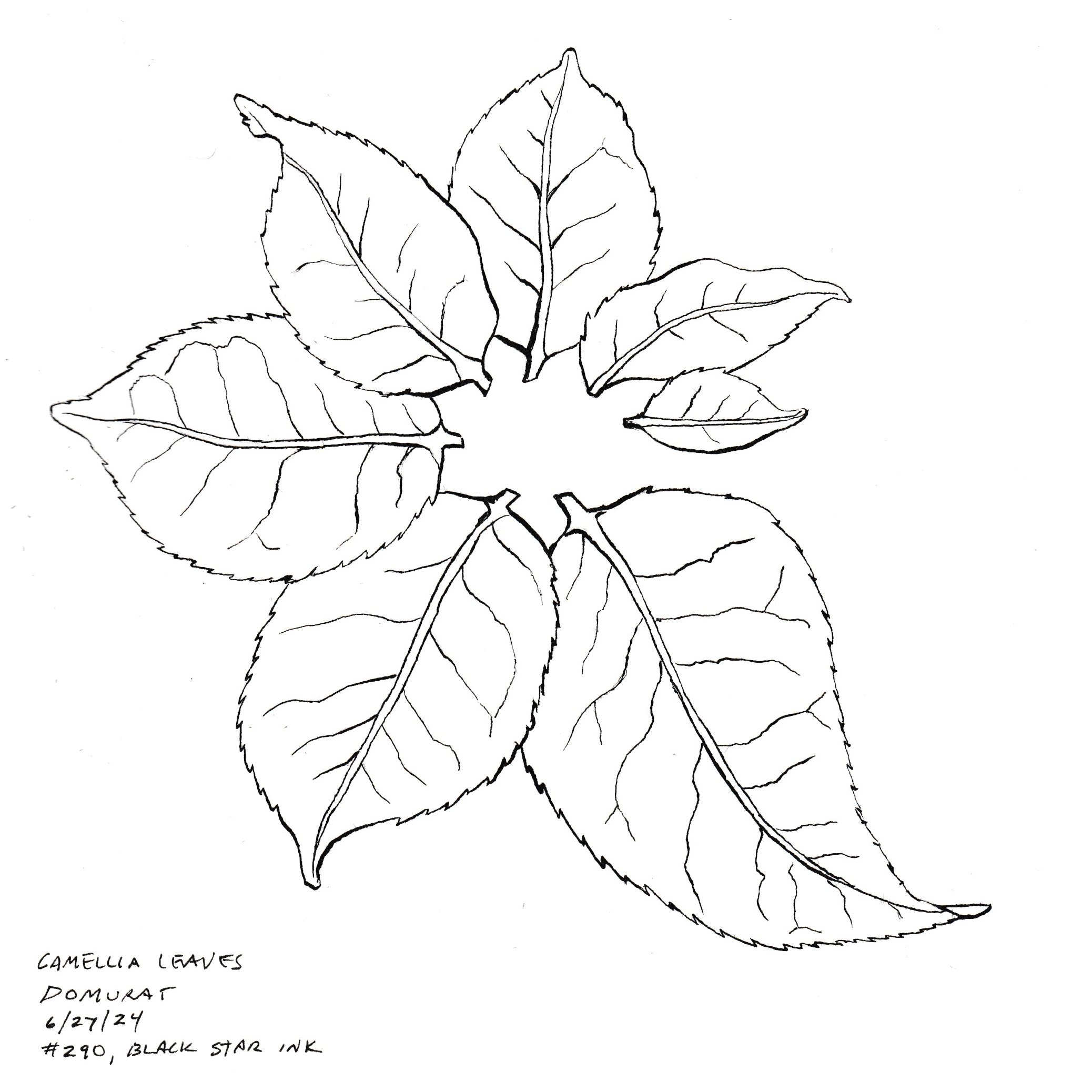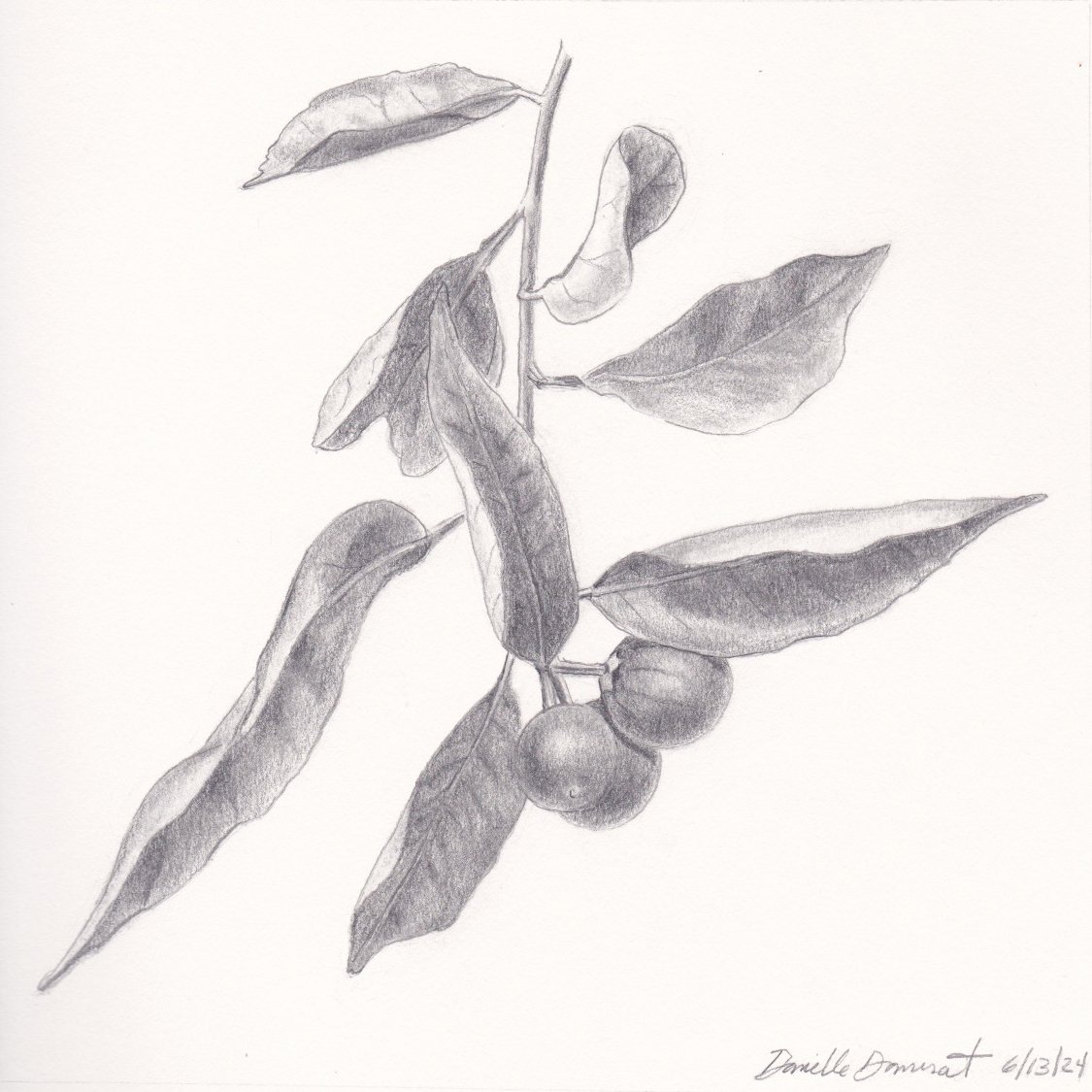In this exercise, we were to create a composition of three or more leaves that overlapped, first in pencil and then in pen/ink.
For the pencil one, I wanted to have three very distinct leaves. While composing, I spent about a half hour considering diagonals, tangents, and empty space.
For the ink one, I thought I’d try to compose something with the golden mean in mind, but it wasn’t working, so I tried a circular pattern with the stems of varying sizes/ages of camellia leaves.
Scarlett Oak (guess), Fig, and Oklahoma Red Bud, ~8x8in, pencil, 6/23/2024
Camellia Leaves, ~ 7x7in, Gillott #290 with Dr. Ph Martins Black Star Ink, 6/27/2024













